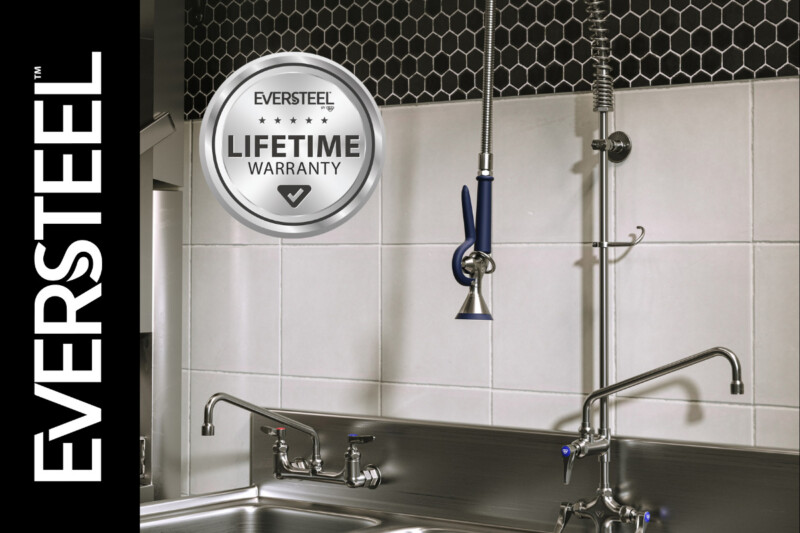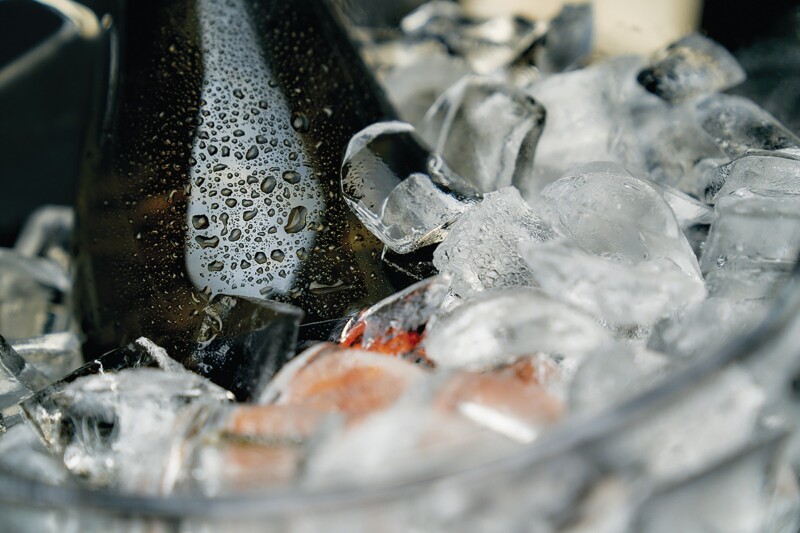Canopy Hoods: Tips on Specifying the Right Model
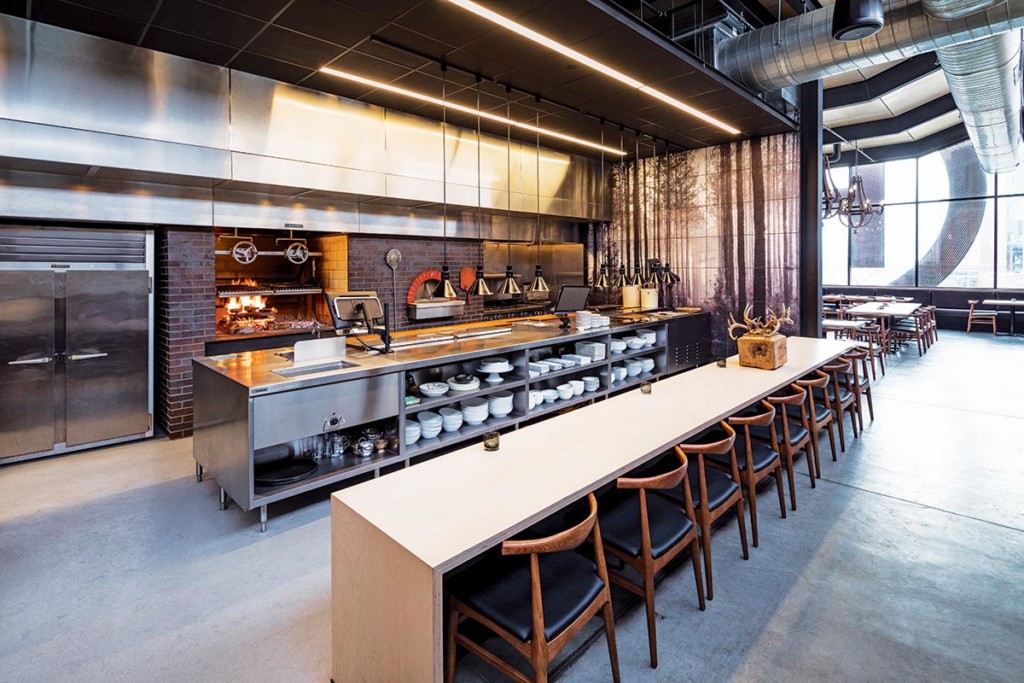
Canopy hoods are what you’ll find in most operations as the central focus of a commercial kitchen ventilation system. In contrast to proximity hoods, which are closely coupled with appliances under them, canopy hoods give you the flexibility to locate most cooking equipment under them, in virtually any configuration (though some lineups are better than others).
The purpose of any Type I hood is safety and comfort—removing heat, grease, smoke and odors from the kitchen reduces the likelihood of a fire and keeps those elements out of the dining area, making for a better customer experience. As a result, operators often think of exhaust hoods like vacuum cleaners, sucking up and venting all that effluent out above the roof. In other words, they think the more CFM (cubic feet of air per minute) moved, the better; but efficiently designed hoods can require a low level of CFM.
While basic designs of the box haven’t changed much in recent years, hood makers have continuously tweaked system designs and controls to meet and exceed new clean air and energy saving regulations such as California’s Title 24 Building Energy Efficiency Standards or Washington state’s C403. And with more operators interested in LEED certification for new buildings and the relatively new WELL building standards (which focus on how buildings affect the well-being of people inside them), manufacturers also are looking at factors like noise and the physical comfort of employees as well as customers.
Design Criteria
The hood you choose will depend on a variety of factors, and each installation has subtle differences that can affect performance over an identical line of cooking equipment in one operation versus another. Some basic questions to answer include:
Is your project driven by budget/price? If so, assess a basic hood without bells and whistles. The upfront cost will be substantially lower, but you’ll pay more for utilities and cleaning over the long haul.
Is the long-term cost of ownership a consideration? Then investigate hoods with demand control features and ways in which you can more closely integrate HVAC and CKV systems.
Do you face code requirements such as CA Title 24 or WA C403? Major hood manufacturers are well-equipped to meet all code requirements with their listed hoods.
What types of foodservice equipment do you have on your line, and how do you operate them? A griddle cooking at 325°F requires less hood performance than one cooking at 400°F, and an 18-in.D griddle requires less than one with a 24-in.D surface. Equipment is classified as light-, medium- or heavy-duty. The hood you spec must handle the mix of equipment you have.
How many pieces of equipment will be on at the same time? More heat and more effluent require more CFM.
What are you cooking and how? Cooking hamburgers, for example, produces more grease than chicken breasts, and cooking on a charbroiler instead of a griddle produces more smoke.
Where’s your equipment located on the line? Hoods have a harder time capturing and containing effluent from equipment like charbroilers or griddles when they’re placed on the ends of a line than if they’re located under the middle of the hood.
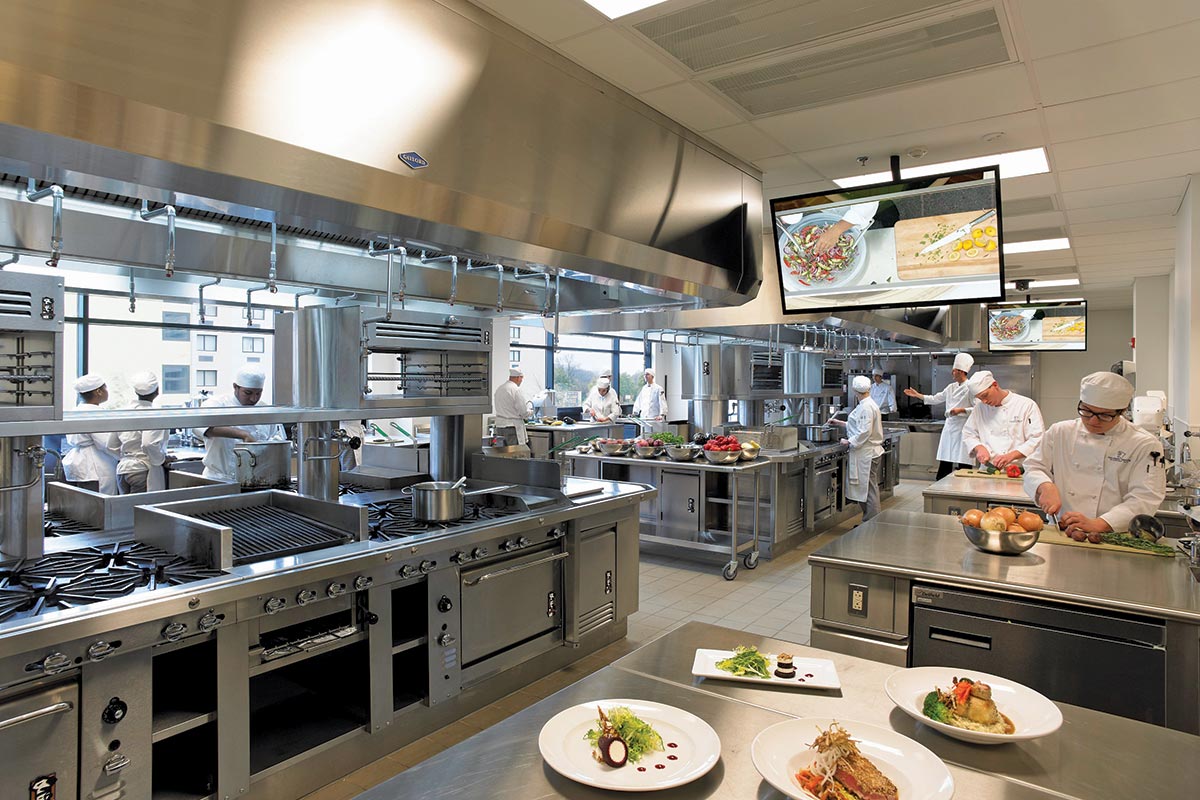
Types of Canopy Hoods
Manufacturers build canopy hoods in three styles—wall canopies, single island canopies and double island canopies. As the name implies, a wall canopy is affixed to a wall, and all the cooking equipment beneath it should abut the wall, as well. A single island covers a single cooking line in the middle of a kitchen and double island canopies cover cooking suites or open kitchens with two cooking lines that are back to back.
While the kitchen layout you have in mind will determine which style of canopy hood you need, understand that hood performance varies greatly from one layout to another. Wall-mounted canopy hoods capture and contain exhaust better and at lower CFM than island hoods. Double island hoods are less efficient, but act more like two wall-mounted hoods back to back. Single island hoods pose the biggest challenge to capture and containment in any kitchen. In other words, if noise and energy use are issues, you may want to rethink that exhibition kitchen.
Capture & Containment
The design of the hood itself will affect airflow through it, which in turn partially determines how well the hood captures and contains effluent and removes grease. A few makers, for example, have focused on “passive” design strategy to reduce how much air has to be moved to contain the effluent. One uses a curved interior that increases air velocity. Another uses a faceted front edge or lip that improves the fluid dynamics of air entering the hood. These may be a good choice when not enough makeup air is available from the HVAC system.
Other makers focus on more “active” canopy hood designs to optimize performance and energy efficiency. One uses a jet of high velocity ambient air at the front and/or sides of the hood to help contain heat and smoke while reducing overall CFM in the hood itself. Another uses end panels to help reduce cross-drafts and a front baffle to direct vapors to the grease filters.
Tweaking your CKV system design on paper before you build can improve hood performance no matter what make. For example, code requires that hoods must always have an overhang of at least six inches beyond the front edge of the equipment, but more will help with capture and containment. Most CKV engineers and designers prefer about 18 inches.
And while building codes universally require a minimum 6½ ft. of height between the lower edge of the hood and the finished floor, raising the hood height spec ensures that you attain this minimum, to account for different thicknesses of flooring materials. Raising it too much, however, can affect hood capture and containment performance. So, find the right balance.
Code Compliance
Most building codes have adopted the International Mechanical Code, but might use the Uniform Mechanical Code, California Mechanical Code or local code, which can be wildly different. In general, IMC requires an NFPA-96-constructed hood, which means it must be made in a way that helps prevent fires. This includes a continuous, liquid-tight weld of all external seams, joints, openings and the hood itself so grease can’t collect and/or leak. Hoods also must have a listed fire suppressant system.
However, the IMC allows you to use any UL-710 listed hood because they’re essentially equivalent to NFPA-96-constructed hoods. And UL-listed hoods give you assurances that a non-listed hood can’t, even if the non-listed hood meets NFPA-96 standards. UL-710 listed hoods in most cases also meet strict energy performance standards adopted in places like California.
Hood performance under all codes is based on hood type and appliance type. The exhaust airflow rate under IMC is set intentionally high to ensure that non-listed hoods capture, contain and exhaust all cooking effluent. But listed hoods are designed to do the job at much lower CFM rates to meet energy efficiency standards like ASHRAE 90.1 and CA Title 24.
Broader energy efficiency measures in CA Title 24 also address what a kitchen facility should do when its total kitchen hood exhaust airflow rate exceeds 5,000 CFM. Prescriptive measures include a demand control kitchen ventilation system; using at least 50% transfer air as makeup air for the hood(s); and the use of energy recovery devices like heat recovery grease filters, among other measures.
Bottom line, know what your local codes demand, and work with a manufacturer to design the most effective and efficient kitchen ventilation system possible within your budget.
Construction Quality
Look for canopy hoods constructed with 304 and 300 stainless because of their corrosion-resistance. More manufacturers have turned to 430 stainless, though, as the former grow increasingly expensive. The latter is fine except in humid and/or salty, coastal air where it rusts more easily and can turn black.
Makers construct high-quality hoods with 18-gauge stainless; 16-gauge is available but heavy, potentially requiring special supports. Low-cost hoods may use less durable 20-gauge steel and galvanized metal in areas that aren’t visible. Hanging angles should be strong enough to hold the weight of the hood and keep it from sagging and flexing. Double-wall, insulated construction improves structural soundness, heat retention, sound dampening and fire safety.
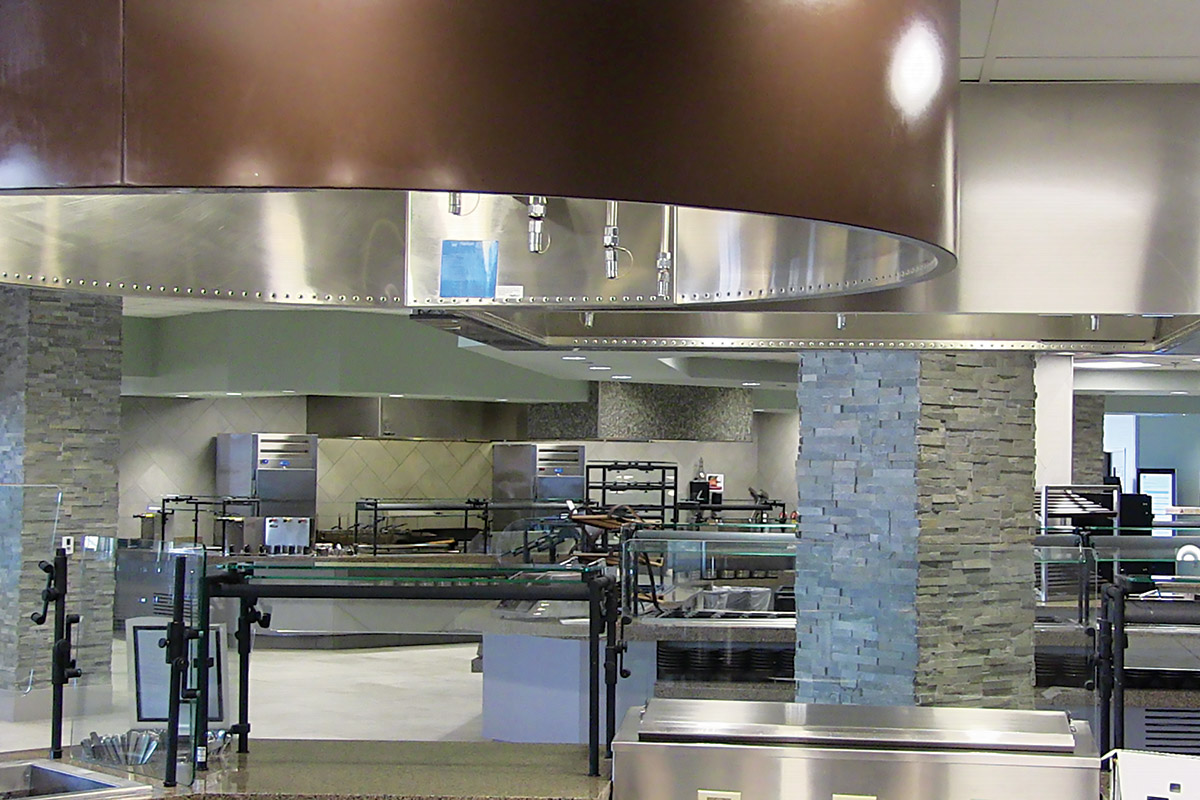
Bells & Whistles: Canopy Hood Options
If long-term operating cost, energy savings, sustainability or LEED- or WELL-building design certification are considerations, manufacturers offer a range of options. Likewise, if ventilation exhaust air quality or special venting requirements are concerns, makers can address them. Options include:
- LED lighting
- Demand control ventilation systems
- High-efficiency grease extraction
- Heat/energy recovery systems
- Pollution control systems that scrub smoke and odors from exhaust
- CKV and HVAC systems integration.
Canopy Hood Best Practices
The Food Service Technology Center recommends you:
- Use larger hoods, including those that are deeper or taller—but not so much so that they’re no longer efficient.
- Lower hoods closer to equipment (but still within code); or where practical, use proximity hoods, which can lower the linear footage of the hood needed for the rest of your equipment.
- Add side panels, end panels or end walls to improve C&C.
- Under wall canopy hoods, push equipment back to the wall (minimize rear gap)—consider a rear seal or shelf.
- Locate heavy-duty equipment (e.g., broiler) in the middle of the hood.
- Situate light-duty equipment (e.g., ovens) on the ends of the hood.
- Don’t waste hood space over non-cooking equipment.
- Introduce makeup air at low velocity.
- Ensure an air balance of the kitchen CKV-HVAC system (with slight negative pressure).
Making Up Isn’t Hard to Do
Air that’s removed from the kitchen through an exhaust hood must be replaced with an equal (or slightly larger) volume of makeup air. Over the years, hood makers and CKV designers have used a variety of strategies to introduce makeup air, including transfer air (e.g., from the dining room), floor- or wall-mounted displacement diffusers, a variety of ceiling diffusers and integrated hood plenums.
But newer lab and field research conducted by organizations like the American Society of Heating, Refrigerating and Air-Conditioning Engineers and the Food Service Technology Center shows what works and what doesn’t. Whenever possible, makeup air should be introduced at low velocity near the hood and through transfer air from the HVAC system that travels as a result of a slightly negative pressure into the kitchen from the dining room. That maximizes the hood’s ability to capture and contain effluent.
In the past, some CKV designers were tempted to use as much local makeup air as possible, even introducing it directly into the hood (called a short circuit, a real no-no). The advantage, as they saw it, was that the makeup air didn’t have to be conditioned, saving energy. But many local makeup air supply sources can adversely affect a hood’s capture and containment capabilities if not designed properly.
Rather than supplying 80%-90% of the exhaust rate through one local makeup air strategy, you should aim for 60%, with the other 40% of the replacement air coming from another source such as transfer air, another local strategy (e.g., a perforated hood plenum or wall diffuser) or the HVAC system. Not only will hood performance be superior, the kitchen environment will benefit from the cooling contribution of the “recycled” dining room air.
Canopy Hood Gallery

ACCUREX ENERGY RECOVERY WALL HOODS
Accurex manufactures wall canopy hoods with energy recovery grease extraction technology that reduces utility costs and hood cleaning. Hoods are UL/ULC-710 listed and available in several styles and configurations. Hoods can be built in single section lengths from 3 ft. to 16 ft., and longer hoods can appear as one section using the continuous-capture option to improve aesthetics. A wide variety of options includes self-cleaning hoods. Integral heat exchanger filters pre-heat incoming water, which saves energy and cools the filters, condensing and trapping more grease.

AVTEC ECO ARCH EA2 EXHAUST HOOD
Avtec’s Eco Arch hood uses the heat energy created by your kitchen’s cooking equipment to guide smoke, grease, steam and other cooking effluents directly to the cartridge opening for quick, quiet removal. As the hot air rises, an aerodynamic arch at the rear of the hood guides it. This means when more heat is given off, more air is “pushed” toward the cartridges. This is one reason the company designs the Eco Arch hood at CFM rates 30%-50% less than standard box hoods.

HALTON VENTILATED CEILING SYSTEM
Halton designed the Ventilated Ceiling System as a series of exhaust pods in lengths from 5 ft. to 14 ft. with KSA cyclonic grease extractors and KCD perforated supply plenums intended for use in kitchens that do light- to medium-duty cooking. Extractors are easy to remove and clean. LED light fixtures are standard and illuminate to 500 lux at work surface height. Integrating all components into the ceiling leaves unobstructed sightlines in the kitchen and makes for low sound levels.

GAYLORD ELXC SERIES ELIMINATOR
The Eliminator pollution control ventilator abates smoke and diminishes odor in a small, cost-effective footprint. The ventilator contains secondary filters positioned between the XGS high-efficiency filters and UV lamps that enhance performance. The in-hood integration eliminates the need for a stand-alone pollution control unit in a mechanical room or rooftop location. Eliminator’s easy-to-access in-hood placement ensures cleaning and maintenance. Clean-in-place wash technology offers additional savings as a result of the reduced need for hot water, electrical and sewage, depending on your operation.
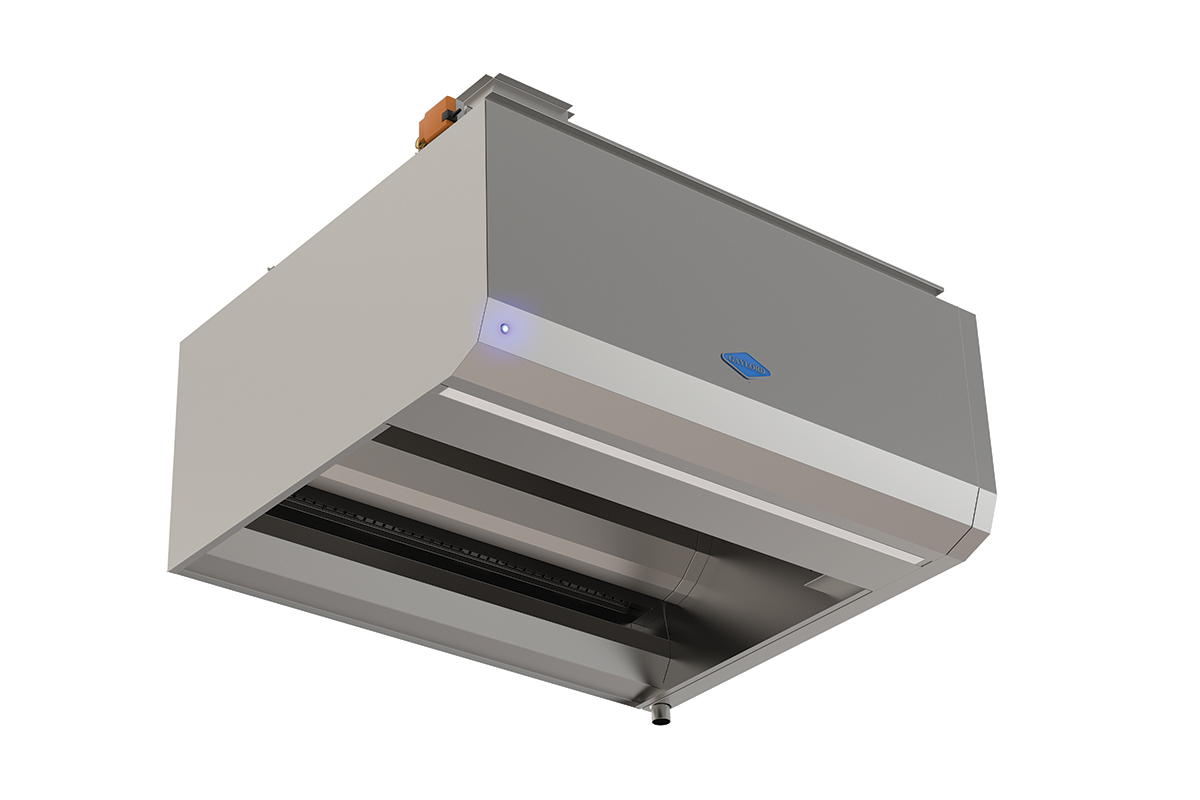
GAYLORD ELXC SERIES ELIMINATOR
The Eliminator pollution control ventilator abates smoke and diminishes odor in a small, cost-effective footprint. The ventilator contains secondary filters positioned between the XGS high-efficiency filters and UV lamps that enhance performance. The in-hood integration eliminates the need for a stand-alone pollution control unit in a mechanical room or rooftop location. Eliminator’s easy-to-access in-hood placement ensures cleaning and maintenance. Clean-in-place wash technology offers additional savings as a result of the reduced need for hot water, electrical and sewage, depending on your operation.
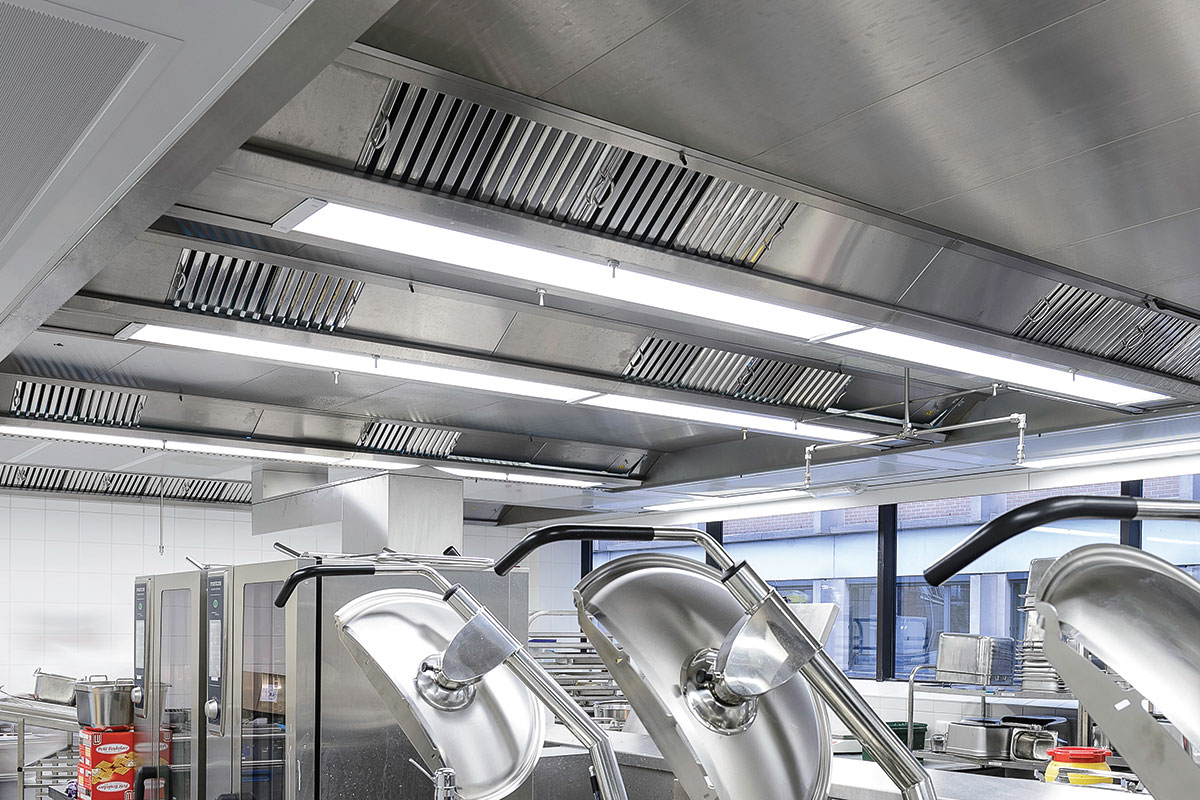
HALTON VENTILATED CEILING SYSTEM
Halton designed the Ventilated Ceiling System as a series of exhaust pods in lengths from 5 ft. to 14 ft. with KSA cyclonic grease extractors and KCD perforated supply plenums intended for use in kitchens that do light- to medium-duty cooking. Extractors are easy to remove and clean. LED light fixtures are standard and illuminate to 500 lux at work surface height. Integrating all components into the ceiling leaves unobstructed sightlines in the kitchen and makes for low sound levels.
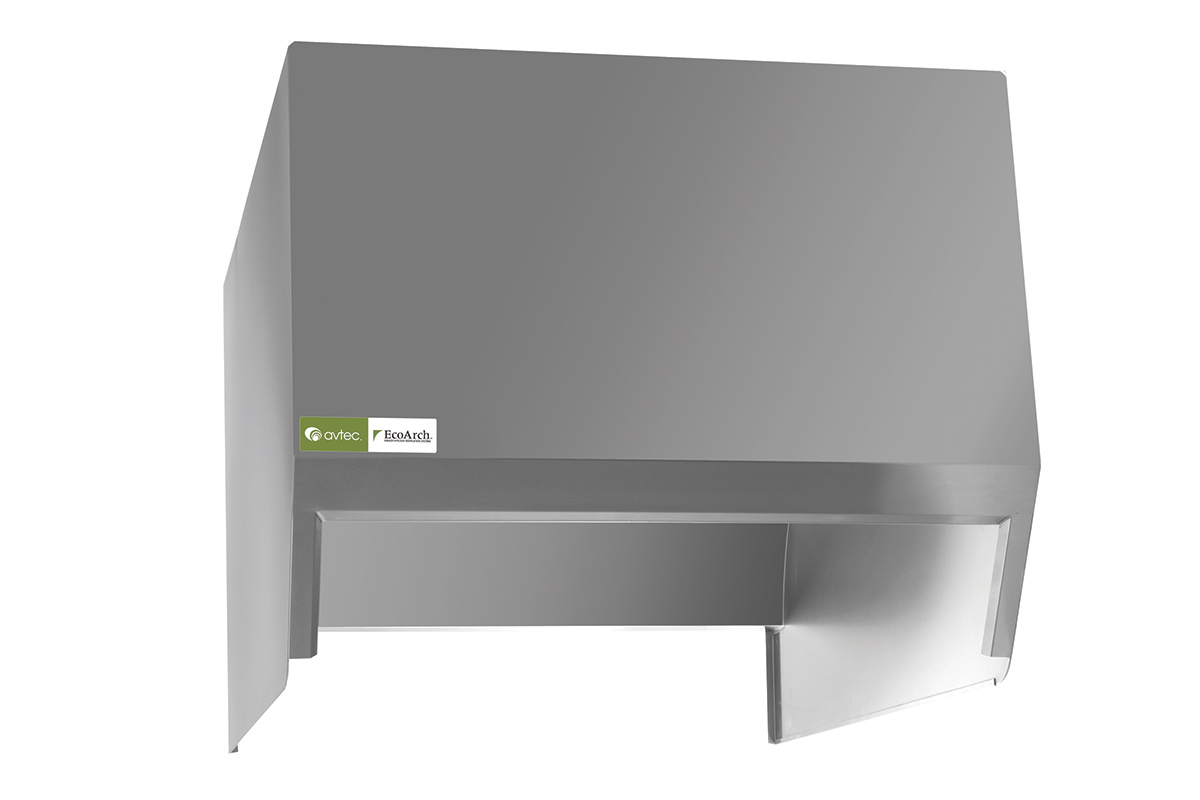
AVTEC ECO ARCH EA2 EXHAUST HOOD
Avtec’s Eco Arch hood uses the heat energy created by your kitchen’s cooking equipment to guide smoke, grease, steam and other cooking effluents directly to the cartridge opening for quick, quiet removal. As the hot air rises, an aerodynamic arch at the rear of the hood guides it. This means when more heat is given off, more air is “pushed” toward the cartridges. This is one reason the company designs the Eco Arch hood at CFM rates 30%-50% less than standard box hoods.
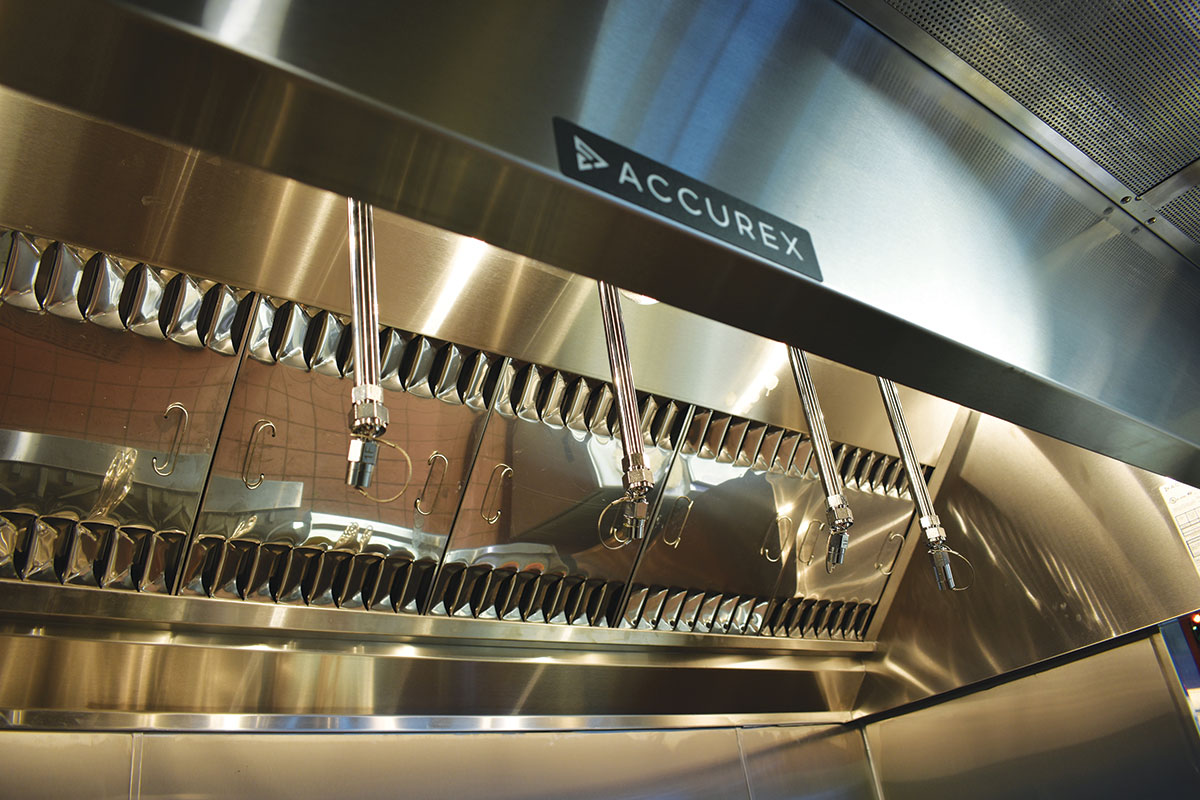
ACCUREX ENERGY RECOVERY WALL HOODS
Accurex manufactures wall canopy hoods with energy recovery grease extraction technology that reduces utility costs and hood cleaning. Hoods are UL/ULC-710 listed and available in several styles and configurations. Hoods can be built in single section lengths from 3 ft. to 16 ft., and longer hoods can appear as one section using the continuous-capture option to improve aesthetics. A wide variety of options includes self-cleaning hoods. Integral heat exchanger filters pre-heat incoming water, which saves energy and cools the filters, condensing and trapping more grease.
RELATED CONTENT
- Advertisement -
- Advertisement -
- Advertisement -
TRENDING NOW
- Advertisement -
- Advertisement -
- Advertisement -

